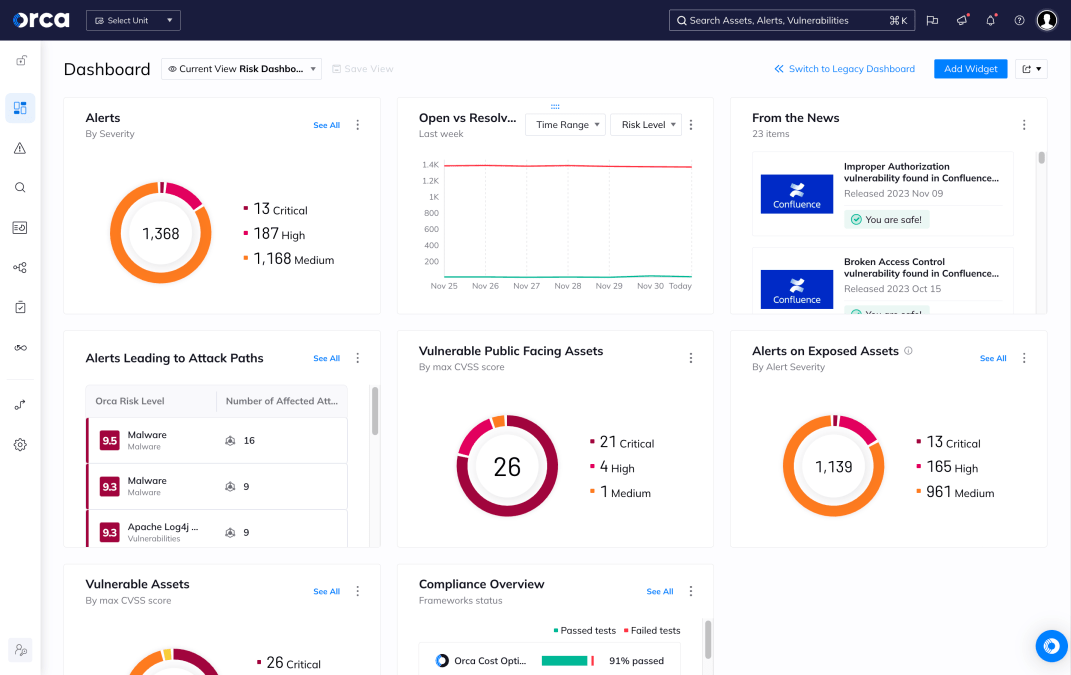A firewall is a network security system that monitors and controls incoming and outgoing traffic based on defined security rules, serving as a barrier between trusted and untrusted networks. Traditionally implemented as hardware appliances, firewalls have evolved into software-based and cloud-native services that play a vital role in protecting cloud infrastructure. In cloud environments, firewalls help secure virtual networks, restrict unauthorized access, and enforce segmentation across resources deployed in multiple regions, availability zones, or accounts.
Why is it important?
Firewalls are fundamental to securing cloud workloads. Without proper firewall rules, cloud environments can expose services directly to the internet, increasing the risk of unauthorized access, lateral movement attacks, and data exfiltration. In multi-cloud and hybrid architectures, firewalls enforce consistent policies across distributed environments.
Organizations rely on firewalls for:
- Traffic filtering: Allowing only legitimate traffic while blocking threats.
- Network segmentation: Limiting access between environments, such as production and development.
- Regulatory compliance: Meeting requirements for data protection frameworks like PCI DSS, HIPAA, and SOC 2.
- Zero trust implementation: Enforcing least-privilege principles with microsegmentation and workload isolation.
Firewalls are also essential for protecting against opportunistic attacks and automated scans. Without perimeter protections, attackers can easily identify exposed services using scanning tools and exploit misconfigurations or unpatched software. Firewalls act as an initial barrier, reducing the overall attack surface.
How does it work?
Firewalls inspect network packets based on criteria such as source/destination IP address, ports, protocols, and session state. There are several types:
- Stateless firewalls: Evaluate individual packets without context.
- Stateful firewalls: Track active sessions to make decisions based on context.
- Next-generation firewalls (NGFWs): Include deep packet inspection, intrusion prevention, and application-level filtering.
In cloud environments, firewall functionality is typically distributed across multiple layers:
- Security groups: Virtual firewalls at the instance or resource level.
- Network ACLs: Subnet-level rules that control inbound and outbound traffic.
- Cloud-native firewalls: Managed services that provide centralized policy enforcement.
- Microsegmentation: Uses software-defined networking to isolate workloads and restrict traffic to explicitly authorized flows.
These capabilities allow cloud customers to tightly control data flows and minimize exposure.
Security risks and challenges
Firewalls can become liabilities if misconfigured or improperly managed. Common risks include:
- Overly permissive rules: Allowing unrestricted traffic (e.g., 0.0.0.0/0) can expose cloud assets to the internet.
- Configuration drift: Changes in firewall rules over time can lead to unintentional exposure.
- Rule sprawl: Accumulation of unused, outdated, or conflicting rules makes auditing and management difficult.
- Shadow IT: Cloud resources deployed outside IT governance may bypass firewall policies.
- Encrypted traffic: Malicious activity can be hidden within encrypted communications.
- East-west traffic: Movement between internal cloud resources often bypasses traditional perimeter controls.
Best practices and mitigation strategies
To maximize effectiveness and minimize risk, organizations should adopt the following practices:
- Default deny policies: Start by blocking all traffic and explicitly allow only required services.
- Regular rule audits: Periodically review and remove outdated or unused rules.
- Automate configurations: Use infrastructure as code (IaC) tools to manage firewall rules consistently and track changes.
- Align with data sensitivity: Apply stricter rules to environments handling sensitive or regulated data.
- Implement segmentation: Use firewalls to segment environments based on risk, access needs, and compliance boundaries.
- Monitor traffic flows: Collect and analyze logs to detect anomalies, blocked access attempts, or policy violations.
- Integrate with SIEM/SOAR tools: Enable real-time alerting, response, and investigation of firewall-related incidents.
- Educate cloud teams: Ensure that developers and DevOps personnel understand firewall impacts and apply policies appropriately.
Combining firewalls with endpoint security, identity management, and encryption further enhances cloud defenses.
How Orca Security helps
The Orca Cloud Security Platform augments and strengthens firewall security across multi-cloud environments by providing:
- Full visibility into firewall configurations, security groups, network ACLs, and cloud-native firewalls
- Contextual risk prioritization, factoring in a comprehensive and dynamic set of risk and asset-based factors, including internet exposure, asset sensitivity, and lateral movement potential
- Continuous monitoring for misconfigurations and other risks, as well as suspicious and anomalous activity
- Visual mapping of access paths to verify segmentation and identify policy gaps.
- Remediation code and instructions that teams can apply from cloud to development using automated and AI-Driven features
These capabilities help organizations proactively reduce risk, enforce least-privilege access, and ensure compliance across distributed cloud environments.




